#the virgin queen 2005
Explore tagged Tumblr posts
Text




THE VIRGIN QUEEN (2005)
dir. coky giedroyc
#the virgin queen 2005#tudorerasource#tudor era#costume drama#period drama#perioddramaedit#perioddramagif#onlyperioddramas#perioddramasource#weloveperioddrama#bbc series#miniseries#queen elizabeth i#robert dudley#anne marie duff#tom hardy#my gifs#mine
216 notes
·
View notes
Photo



A clasp has been added
THE VIRGIN QUEEN
(2005)
211 notes
·
View notes
Text
Emilia Fox in The Virgin Queen
Please be careful when viewing the content in this post






























All of these gifs were made from scratch by me for roleplaying purposes. Feel free to use them as sidebars and reaction gifs. PLEASE DON’T CLAIM THEM AS YOUR OWN.
5 notes
·
View notes
Text
This Dress is worn in The Virgin Queen (2005) on an exstra as lady and worn in The Tudors (2007) on Natalie Dormer as Anne Boleyn and worn again in Armada - 12 days to save England" 2015 on Anita Dobson as Elizabeth I



#recycled costumes#The Virgin Queen“ 2005#the tudors#natalie dormer#anne boleyn#Armada - 12 days to save England#costume drama#historical drama#reused costume#reused costumes#dramasource#drama series#source: historicalreusedcostumes
2 notes
·
View notes
Text
a list of some autumnal movies/series 🍂
i am nothing if not an organised little goblin who can not stop themself from making a good list. this is just in case you want something with that fall vibe but can't think of any. just close your eyes and point somewhere on this little list, or even put the numbers in a generator and go with whatever the result is ♡
winter | spring | summer
🥧 ‧₊˚ ⋅ movies ⋅˚₊‧
nosferatu (1922)
sabrina (1954)
the creature from the black lagoon (1954)
psycho (1960)
rosemary’s baby (1968)
the rocky horror picture show (1975)
halloween franchise (1978-)
friday the 13th franchise (1980-)
an american werewolf in london (1981)
dark crystal (1982)
a nightmare on elm street (1984)
ghostbusters (1984-)
ronja rövardotter (1984)
clue (1985)
princess bride (1987)
the witches of eastwick (1987)
elvira mistress of the dark (1988)
dead poets society (1989)
when harry met sally (1989)
ghost (1990)
the witches (1990)
death becomes her (1992)
hocus pocus (1993)
addams family values (1993)
interview with a vampie (1994)
the craft (1996)
the first wifes club (1996)
the scream franchise (1996-)
halloweentown (1998)
practical magic (1998)
you’ve got mail (1998)
the blair witch project (1999)
sleepy hollow (1999)
chocolat (2000)
amelie (2001)
the lord of the rings franchise (2001-2003)
scooby doo (2002)
school of rock (2003)
mona lisa smile (2003)
peter pan (2003)
pirates of the caribbean franchise (2003-2017)
north & south (2004)
pride and prejudice (2005)
the descent (2005)
just like heaven (2005)
the devil wears prada (2006)
the lake house (2006)
penelope (2006)
el orfanato (2007)
juno (2007)
ratatouille (2007)
bridge to terabithia (2007)
the edge of love (2008)
twilight (2008)
the curious case of benjamin button (2008)
julie & julia (2009)
jennifer’s body (2009)
dorian gray (2009)
coraline (2009)
true grit (2010)
the cabin in the woods (2011)
jane eyre (2011)
wuthering heights (2011)
perks of being a wallflower (2012)
the odd life of timothy green (2012)
hotel transylvania (2012-)
the conjuring franchise (2013-)
what we do in the shadows (2014)
the riot club (2014)
as above so below (2014)
john wick (2014-)
the age of adaline (2015)
the witch (2015)
far from the madding crowd (2015)
the edge of seventeen (2016)
paterson (2016)
20th century woman (2016)
the love witch (2016)
mary shelly (2017)
murder on the orient express (2017)
get out (2017)
a quiet place (2018 + 2020)
the guernsey literary and potato peel pie society (2018)
on the basis of sex (2018)
knives out (2019)
ready or not (2019)
the lighthouse (2019)
little women (2019)
the gentlemen (2019)
emma (2020)
ammonite (2020)
the dig (2021)
fear street trilogy (2021)
good luck to you, leo grande (2022)
the batman (2022)
fresh (2022)
bodies bodies bodies (2022)
mr malcom's list (2022)
totally killer (2023)
slay (2024)
🧦 ‧₊˚ ⋅ series ⋅˚₊‧
moomin (1990-1992)
twin peaks (1990-1991)
x files (1993-2018)
buffy the vampire slayer (1997-2003)
gilmore girls (2000-2007)
supernatural (2005-2020)
vampire diaries (2009-2017) / the originals (2013-2018) / legacies (2018-2022)
downton abbey (2010-2015)
the walking dead (2010-2022)
once upon a time (2011-2018)
american horror story (2011-)
teen wolf (2011-2017)
peaky blinders (2013-2022)
outlander (2014-)
how to get away with murder (2014-2020)
the magicians (2015-2020)
izombie (2015-2019)
poldark (2015-2019)
critical role (2015-)
stranger things (2016-)
ghost files / buzzfeed unsolved (2016-)
lucifer (2016-2021)
shadowhunters (2016-2019)
anne with an e (2017-2019)
the good fight (2017-2022)
riverdale (2017-2023)
manifest (2018-2023)
killing eve (2018-2022)
succession (2018-2023)
you (2018-)
a discovery of witches (2018-2022)
the chilling adventures of sabrina (2018-2020)
dickinson (2019-2021)
virgin river (2019-)
carnival row (2019-2023)
the witcher (2019-)
the umbrella academy (2019-2024)
sanditon (2019-2023)
good omens (2019-2025)
the haunting of bly manor (2020)
i’ll be gone in the dark (2020)
queens gambit (2020)
the great (2020-2023)
shadow and bone (2021-2023)
the nevers (2021-2023)
wednesday (2022-)
interview with the vampire (2022-)
vikings valhalla (2022-2024)
lessons in chemistry (2023)
my lady jane (2024-)
#♡ ♡ ♡#lea speaks#• comfort if you need it •#movies#comfort movies#movie recommendation#autumn aesthetic#fall aesthetic#halloween aesthetic#studyblr#cottagecore#dark academia#autumn#autumn vibes#fall#fall vibes#cozycore#cosycore#hygge#witch aesthetic
989 notes
·
View notes
Text
My ultimate film watchlist (2000s)
1930s-1940s | 1950s | 1960s-1970s | 1980s | 1990s | 2010s
Welcome to part 6 of my ultimate film watchlist. This list will consist of a lot of my favorites from childhood that I want to rewatch, as well as movies that I was much too young to watch at the time. Sometimes that didn't stop my mom from letting me sit in the living room with her while she watched them. I usually played or did my homework during these times, and was told to look away if she knew an innapropriate part of a movie was coming up. I was just happy to be with her.


Enjoy this list, and as always, please let me know if I'm missing any major film and I will gladly add it to the list!
watched | loved | wouldn’t watch again | holiday
2000
102 Dalmatians
Almost Famous
American Psycho (made me laugh tbh)
Battle Royale
Best in Show
Billy Elliot
Bring It On
Chicken Run
Coyote Ugly
Emperor's New Groove
Erin Brockovich
Gladiator
Memento
Remember the Titans
Requiem for a Dream
Scary Movie
Scream 3
The Road to El Dorado
The Tigger Movie
Unbreakable
2001
Amélie
Atlantis: The Lost Empire
Donnie Darko
Drudget Jone's Diary
Get Over It
Harry Potter and the Sorcerer's Stone (I wish I was joking, I haven't watch a sing HP movie)
Jeepers Creepers
Legally Blonde
Lord of the Rings: The Fellowship of the Ring (also wish I was joking here omg)
Monsters, Inc
Moulin Rouge
Recess: School's Out
Shrek
Spirited Away
Spy Kids
Tart
The Fast and the Furious
The Princess Diaries
Zoolander
2002
28 Days Later
40 Days and 40 Nights
Adaptation
Bend It Like Beckham
Better Luck Tomorrow
Carrie
Get A Clue
Ice Age
Lilo & Stitch
Minoirity Report
My Big Fat Greek Wedding
The Ring
The Santa Clause 2
Treasure Planet
Whale Rider
2003
Bad Santa
Brother Bear
Calendar Girls
ELF
Finding Nemo
Freaky Friday
Holes
House of 1000 Corpses (love Rob Zombie <3)
How to Lose a Guy in 10 Days
Kill Bill: Vol. 1
Lost in Translation
Love Actually
Pirates of the Caribbean: The Curse of the Black Pearl
Scary Movie 3
Something's Gotta Give
The Haunted Mansion
The Lizzie McGuire Movie
The School of Rock
Thirteen
Uptown Girls
2004
13 Going on 30 (it's good if you can view it in context of the time, otherwise extremely hard to watch a grown woman hang out with 13 year olds and hit on a teenage boy)
America's Heart and Soul
Anchorman: The Legend of Ron Burgundy
Confessions of a Teenage Drama Queen
Dirty Dancing: Havana Nights
Eternal Sunshine of the Spotless Mind
Garden State
Home on the Range
Kill Bill: Vol. 2
Mean Girls
Million Dollar Baby
Napoleon Dynamite
National Treasure
Sacred Planet
Saw
Shaun of the Dead
Shrek 2
Sideways
Sleepover
The Incredibles
The Notebook
The Phantom of the Opera
The Village
2005
Brokeback Mountain
Broken Flowers
Chicken Little
Corpse Bride
Herbie: Fully Loaded
House of Wax
Howl's Moving Castle
Ice Princess (tried ice skating because of this movie at 6. I fell, cried, and never did it again)
Madagascar
Mr. & Mrs.
Odd Girl Out
Robots
Saw II
Sin City
Sky High
The 40-Year-Old Virgin
The Chronicles of Narnia: The Lion, the Witch, and the Wardrobe
The Descent
The Sisterhood of the Travelling Pants
Walk the Line
Wedding Crashers
2006
300
Borat
Cars
Children of Men
Flushed Away
Happy Feet
High School Musical
Ice Age: The Meltdown
Idiocracy
Just My Luck
Kinky Boots
Little Miss Sunshine
Monster House
Over the Hedge
Pan's Labyrinth
Pirates of the Caribbean: Dead Man's Chest
Saw III
Scary Movie 4
Silent Hill
Stay Alive
Step Up
The Devil Wears Prada
The Hills Have Eyes
The Host
The Santa Clause 3: The Escape Clause
V for Vendetta
2007
30 Days of Night
Becoming Jane
Bee Movie (I'm sure you've also watched)
Bridge to Terabithia
Enchanted
High School Musical 2
Meet the Robinsons
National Treasure: Book of Secrets
Pirates of the Caribbean: At World's End
Ratatouille
Shrek the Halls (don't sleep on this)
Shrek the Third
Sweeny Todd: The Demon Barber of Fleet Street
Trick R' Treat
2008
Beverely Hills Chihuahua
Bolt
Hannah Montana and Miley Cyrus: Best of Both Worlds Concert (specifically want to watch with my future daughter)
High School Musical 3: Senior Year
Horton Hears a Who
Madagascar: Escape 2 Africa
Repo! The Genetic Opera
The Boy in the Striped Pyjamas
Twilight
WALL-E
2009
A Christmas Carol
Antichrist
Cloudy with a Chance of Meatballs
G-Force
Hannah Montana: The Movie
Jennifer's Body
Monsters Vs. Aliens
Old Dogs
Planet 51
Ponyo
Race to Witch Mountain
The Lovely Bones
The Princess and the Frog
The Proposal
The Twilight Saga: New Moon
Up
#2000s#00s#2000s film#2000s films#2000s movie#2000s movies#00s films#00s movies#angelina jolie#disney#zach effron#vanessa hudgens#ashley tisdale#keira knightly#natalie portman#kate winslet#brad pitt#leonardo dicaprio#heath ledger#johnny depp#matt damon#robert downey jr#watchlist#ultimate watchlist#film watchlist#movie watchlist
19 notes
·
View notes
Text
the virgin queen bbc being one of the few productions where elizabeth is a lifelong virgin, but also girl that's 2005 tom hardy as robert dudley that is so unbelievable no woman could resist that
26 notes
·
View notes
Text
on the list of garbage things i like too much "the virgin queen" (2005) ranks pretty high but in my defense tom hardy did look like this:

3 notes
·
View notes
Text
Minoan Gods
Decided to take an old article and repackage it for the tumblr audience.

The double-edged axe or labris, likely the least controversial thing written here.
To honor the latest release of Minotaur Hotel I decided to do an article on what is known of the Minoan deities.
Known as the “first European city-makers” and a distant precursor to Greece, what is called the Minoan Civilization after King Minos of Crete was a mysterious Bronze Age nation that governed Crete and neighbouring parts of the Aegean. Its age, likely influences over posterior Greek (and by extension western) culture and unique art has long made it a subject of mystique and intrigue. Whereas it’s the several still undeciphered scripts and languages or the fact that it seems to have a rare genuinely matriarchal society, it seems the countless research and academia only raises more questions than answers.
One such well documented but ultimately unsuccessful endeavour is identifying the pantheon these people worshipped. It is strongly speculated that Minoan Crete was theocratic (Kristiansen & Larsson, 2005, among several others) and several art either represents cultic activities (such as the famous bull leaping) if not gods themselves, but in the absence of the proper written word this is beyond impossible to ascertain. The implications of understanding Minoan religion are very clear, as beyond offering a snapshot to the lives of these people it also bears the potential implication that many Greek gods and mythological figures ultimately had their origins here.
To completely compile, summarise and synthesize all that has been written on Minoan religion is a task far too vast to implement, so here are some of the most widely agreed upon gods.
Queen of the Gods
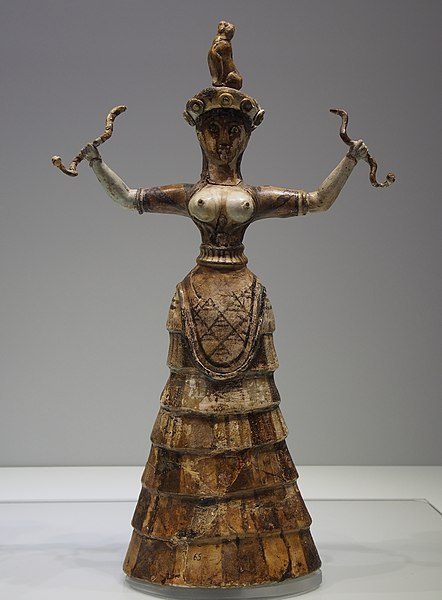
Snake goddess figurine by C messier. The most well known Minoan possible religious artifact, it’s still not clear if these figurines represent a goddess, multiple goddesses or human priests.
By far the most well kown figure attributed to Minoan religion is the Queen or Mother goddess, sometimes known as “Snake Goddess” due to an abundance of figurines depicting women holding snakes. Perhaps surprisingly (or not given the second paragraph), she’s not actually attested anywhere, given that Minoan scripts haven’t yet been deciphered, but her existence can be inferred due to a variety of factors:
Female figurines are by far the most common representation of what could be interpreted as a god in Minoan sites. Chief among these are the aforementioned “snake goddess” figurines. While there is considerable debate on whereas these truly represent deities (plural or singular) or mortal priestesses, they are comparable to apotropaic depictions of surrounding cultures, most notably those of the latter Athena Parthenos which similarly is associated with serpentine iconography as controlling these forces of chaos (Ogden 2013).
The fact that Minoan society was matriarchal in nature, which would lend credence to the supreme being in their cosmology being feminine in nature. While a dominant female deity does not always correlate to a matriarchal society (i.e. Amaterasu, Virgin Mary, et cetera), the opposite, a matriarchal society with a masculine supreme god, is yet to be documented (though see below).
Several Greek mother goddesses such as Demeter and Rheia are thought to have a Cretan origin (Mylonas 1966, Sidwell 1981 among several others), so it’s not terribly hard to see them as “descendents” of this Minoan deity.
The Philistines, contray to biblical assertions on Dagon worship, seem to have favoured a goddess as their primary deity (Schäfer-Lichtenberger 2000, Ben-Shlomo 2019). The Philistines, through genetic legacy and material culture, are now understood to have had an Aegean origin, so again seeing this as a continuation of a Minoan goddess is plausible.
Several names have been speculated for this deity, usually along the lines of the author’s interpretation of Minoan scripts (which should be noted, are not only undeciphered but very likely don’t mention deities at all, since all we have seem to brief texts likely attributed to tax reports). The name “Rhea” doesn’t seem to be of Indo-European origin (Nilsson 1950, Sidwell 1981), making it very likely that this is a theonym with Minoan origins. The same applies to Ariadne (Alexiou 1969) and possibly also Athena (Beekes 2009). Conversely, the Philistine goddess is possibly attested as “Ptgyh” (Ben-Shlomo 2019), a name that is speculated to be related to Greek “Potnia”, “mistress”. In all likelihood, such an important goddess likely was known by a variety of epithets.
Fertility is naturally considered a major function of this mother goddess, but perhaps in ways one might not expect. An emphasis on solar worship has been noted due to temple arrangements and material objects such as “frying pans” with solar iconography (Ridderstad 2009), suggesting that, rather than an earth goddess as one might expect, this was a solar goddess. Solar goddesses are known from a variety of Near Eastern cultures such as Egypt (Sekhmet, Hathor), Anatolia (Arinniti, Istanu, Estan, Wurunsemu) and Canaan (Shapash) so a solar interpretation of the Minoan supreme goddess isn’t unusual. In particular, this might imply a more “chthonic” interpretation of the sun than the Classical “object in the sky”, due to temple angles tressing sunrises and sunsets (Ridderstad 2009), whch is consistent with the Hittite notions of the sun goddess ruling the underworld. Regardless, as noted below in Talos there is also possible evidence for a Minoan male sun.
More unambiguously, this goddess had a civil and possibly domestic function. As noted above snake goddess figurines might be apotropaic in nature, used to ward off evil spirits or more mundane threats like snakes. If Athena is derived from this goddess then a role as the protector of the palace is also implied given Athena’s role in the Mycenaean era, and both Ariadne and Athena are associated with weaving. Conversely, so are solar goddesses in other places, like the Baltic Saule or the Turkic Gun Ana, as the rays of the sun are easily linked to threads, further suggesting this role for the Minoan goddess. Both Rhea and Demeter are also associated with lions, animals that not only are symbolic of the sun but also of a notable sun goddess across the sea, Sekhmet.
The fact that the Minoan ruling goddesses was the possible genesis for several Greek goddesses like Rheia, Demeter, Ariadne and Athena suggests a rather extensive and important function in ancient Cretan religion. Conversely, it might also suggest that what we might attributing to a single goddess was in fact several different deities, but as deities overlap and flow into one another it is possible that these goddesses were either seen as one or acquired independent identities several times throught Minoan history.
The Bull God
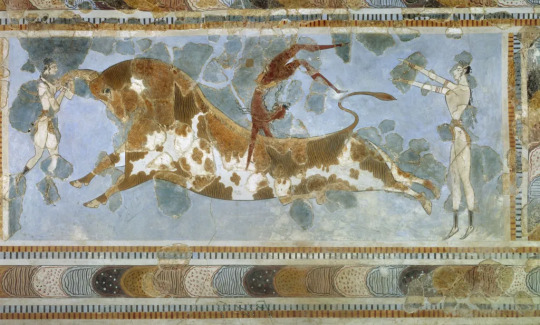
Bull-leaping fresco. A stapple of Minoan art.
The bull is extensively depicted in Minoan art. Most common are bull-leaping frescos depicting youths of both genders leaping or interacting with bulls, suggesting this was a common Minoan sport and perhaps even a religious ritual. But bulls are depicted in many other contexts as well, and as such the existence of an actual Minoan bull god is frequently speculated upon.
In Near-Eastern cultures, bulls are both solar and lunar symbols. On the one hand, the bull’s horn/s resemble/s a lunar crescent, and indeed not only are Middle Eastern male moon gods like Nanna and Suen associated with the bull but even the Greek Selene is described as having a chariot pulled by bulls, suggesting that not even a shift towards a feminine moon deity erased this iconography. On the other hand, a bull is a powerful animal and thus worthy of male solar gods, most notably the Mesopotamian Marduk (literally “calf of the sun”). Sometimes both interpretations show up in the same culture: in Egypt the Apis bull is associated both with Ra and with Osiris as Yah (the moon). Perhaps the same applied to ancient Crete (again, see Talos below), but a lunar bull would certainly be a vivid symbol contrasted against the sun goddess.
The bull is associated with Dionysus which otherwise is mired in more “exotic” symbols, suggesting that the putative “Minoan Dionysus” might be the bull god. It has long been speculated that the bull god is a male youth and son and consort to the queen of the gods, though women are also depicted bull leaping.
The Greek minotaur has long been speculated to be a remnant of the Minoan bull god, not without reason being so throughly linked with Crete as a concept. In this case, the monstrous depiction is either fully discontinuous from older practises or defamatory, with my personal two cents that it is also a jab against the bull gods of the Phoenicians, accused at the time of human sacrifice by the (infant killing) Greeks. Asterion is said to be the birth name of the minotaur by Pseudo-Apollodorus, but I wouldn’t read much into this since this name (literally “starry one”) is a common Greek name for many figures both historical and mythological, and at any rate a recent Indo-European name at odds with the most likely Pre-Greek Cretan languages.
“Dionysus”

“Prince of the Lilies” fresco, often but by no means universally interpreted as a male youth figure.
There is extensive evidence of wine cults in Minoan Crete (Kerényi 1976). This, combined with the Mycenaean depictions of a bull-horned Dionysus (or “di-wo-nu-so” as it is) seems to point to a Minoan origin for this god. “Dionysus” is an Indo-European name connected to Zeus and other sky father figures but the actual character of the god is not easily identified in the PIE world, suggesting a Pre-Greek, local origin. A possible exception is the Lusitanian god Andaeico (Teixeira 2014) which might resemble the putative “flower Dionysus” (see below), but this deity is himself not well understood and might be from an ancient Iberian stratum in Lusitanian culture.
The Mycenaean Dionysus is a figure with stronger ties to death and rebirth than revelry necessarily but the evolution from “eldritch god” to “party dude” might not have been as linear (geddit) a concept as one might expect. Male figurines thought to represent a young god increase in popularity in later stages of Minoan history (Vasilakis 2001) as do male youth figures often identified as “prince of the lilies/flowers” which alongside the wine cults is closer to the Classical Dionysus than the Mycenaean or later Orphic one. However once more in the absence of deciphered scripts it is impossible to say for certainty that these figurines represent deities let alone are Dionysus. Hell, the “flowery figures” have even been interpreted as female at times.
If an actual god, the “Minoan Dionysus” might very well be identified with the bull god, as the bull is a rather odd symbol for the “exotic” attributes the Classical Dionysus is associated with. Ariadne in Greek myth does get hitched with Dionysus; an imbalanced, reversed remnant of the male youth/Minoan queen goddess pairing perhaps?
Talos
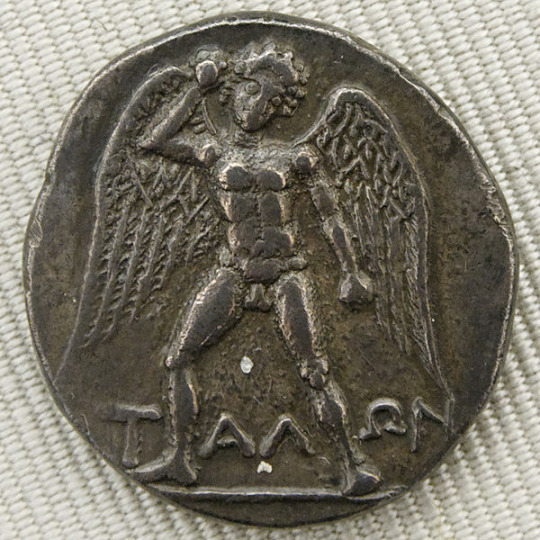
Talos by laura Jastrow.
Perhaps the only Minoan or at least Cretan god we may truly known by name is Talos. In Greek myth Talos is best known as the strange automaton made by Hephaestus, but it was also the Cretan word for “sun”, analogous to “Helios” of mainland Greece according to Hesychius of Alexandria. Zeus was worshipped in Crete as Zeus Talaios, who was associated with the sun, and the Tallaia was a spur of Mt. Ida associated with sunrise rituals (Nilson 1923).
This association of Zeus with Talos is as peculiar as it is extensive. Zeus, a god whose origins are well documented to be Indo-European in nature, is held in Greek myth as born and raised in Crete, and Cretan depictions of Talos differ from those of mainland Greece in having wings. Further, the seduction of Europa by Zeus as a bull links the Classical Zeus to Crete in a very fundamental way. This seems to indicate a rather through syncretism between the Greek/Mycenaean sky god and this indigenous Cretan deity, which in turn implies a rather relevant role to the Minoan Talos.
Conversely, outside of Crete Talos is an enigmatic figure, as noted by Pausanias himself which seems more confused than anything. Certainly, the story of a pre-sci-fi robot is weird, let alone how it relates to an ancient Cretan god, linked to the supreme god of all Greeks down to his very birth.
Talos is truly an anomaly. A solar god which was important enough to warrant syncretism with Zeus, in a matriarchal culture where the sun seems to have been traditionally the supreme goddess herself. Crete was likely never a monolith even at the height of Minoan rule, but all current signs point to Talos being an ancient Cretan deity from before PIE influences in Greece, and he seems so out of place.
My personal two cents is that Minoan cosmology was similar to that of the Hittites and other Anatolian cultures, where the sun is male during the day as it travels through the sky and female at night where it rules the underworld. Talos’ syncretism with Zeus therefore would be derived from representing the male, skyward aspect of the sun, corroborated by worship at the Tallaia. In the original Minoan religion Talos was probably lesser compared to his female aspect (which even as a chthonic deity would easily be accepted as the supreme power; even Mycenaeans favoured the chthonic Poseidon to the celestial Zeus after all), but his roled ensured syncretism with the king of the gods once Crete was conquered.
Britomartis
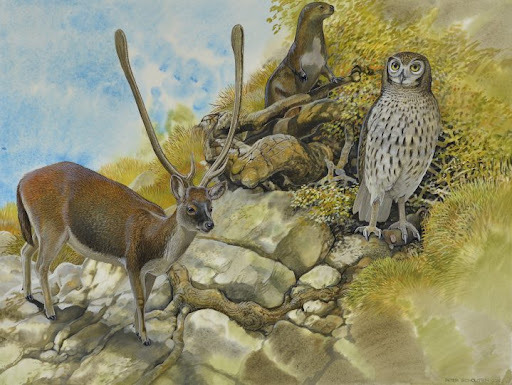
Candiacervus by Peter Schouten.
Britomartis is possibly another deity we might know from a genuinely Minoan or at least Cretan name. Solinus claims it is “sweet virgin” in Cretan and the name doesn’t seem to have Indo-European roots. If true, I’d imagine this theonym is more due to syncretism with the Greek Artemis if anything as I doubt ancient Minoans cared much about virginity as a concept, though Artemis herself may be derived from this deity. Some archaeologists have further suggested that it is an euphemism for the deity’s actual name, since being a goddess of the wilds saying it might have been unwise (Ruck 1994). Another name attributed to her is Diktynna, “hunting nets”, or simply Dicte/Dikte (unsurprisingly, she named said mountain, and was likely its spirit). I’ve never seen the etymology of this name tracked, so I can’t say for sure if it is Greek or Pre-Greek in origin
Britomartis is in Greek myth a mere oread or mountain nymph, said to have invented hunting nets. She is said to have fled Minos’ lust, a tale that even Siculus expressed disbelief at due to her divinity. Thus, although greatly diminuished by Hellenistic times, she was still clearly held to be a deity, and still seems to have been worshipped in Crete during Classical times, frequently appearing in coinage as a winged figured. She is equated to Artemis, a goddess associated with the wilderness and mountains, and it can be assumed she represents a similar “lady of the beasts” archetype. Artemis herself has a name of unclear etymology, and could be of Minoan origin, being perhaps another name for Britomartis.
Some authors tempt to lump Britomartis with the Minoan mother goddess, but to me these seem like clearly distinct figures. Whereas the queen of the gods is a civic, fertility and possibly solar figure, Britomartis is alcearly a goddess of the wild places, perhaps even more specifically the embodiment of Mt. Dicte. Of course, overlap between these two goddesses likely happened at several points in Cretan history.
And that’s it for now.
Other Minoan gods have been positted, including a sea one (naturally), but they aren’t sufficiently supported by everyone in the field at large, so I won’t bother.
References
Kristiansen, Kristian & Thomas B. Larsson. The Rise of Bronze Age Society: Travels, Transmissions and Transformations. Cambridge: Cambridge University Press, 2005.
Ogden, Daniel (2013). Drakon: Dragon Myth and Serpent Cult in the Greek and Roman Worlds. Oxford University Press. pp. 7–9. ISBN 9780199557325 – via Google Books.
George Mylonas (1966), “Mycenae and the Mycenean world “
Sidwell, R.T. (1981). “Rhea was abroad: Pre-Hellenic Greek myths for post-Hellenic children”. Children’s Literature in Education. 12 (4): 171–176. doi:10.1007/BF01142761. S2CID 161230196.
Christa Schäfer-Lichtenberger, The Goddess of Ekron and the Religious-Cultural Background of the Philistines, Vol. 50, No. 1/2 (2000)
David Ben-Shlomo, Philistine Cult and Religion According to Archaeological Evidence, January 2019Religions 10(2):74, DOI: 10.3390/rel10020074
Nilsson, Martin Persson (1 January 1950). The Minoan-Mycenaean Religion and its Survival in Greek Religion. Biblo & Tannen Publishers. ISBN 9780819602732 – via Google Books.
Alexiou, Stylianos (1969). Minoan Civilization. Translated by Ridley, Cressida (6th revised ed.). Heraklion, Greece.
Beekes, Robert S. P. (2009), Etymological Dictionary of Greek, Leiden and Boston: Brill
Marianna Ridderstad, Evidence of Minoan astronomy and calendrical practices, October 2009
Kerényi, Karl. 1976. Dionysus. Trans. Ralph Manheim, Princeton University Press. ISBN 0691029156, 978-0691029153
Monteiro Teixeira, Sílvia. 2014. Cultos e cultuantes no Sul do território actualmente português em época romana (sécs. I a. C. – III d. C.). Masters’ dissertation on Archaeology.. Lisboa: Faculdade de Letras da Universidade de Lisboa.
Andonis Vasilakis, MINOAN CRETE: FROM MYTH TO HISTORY Paperback – January 1, 2001
Nilsson, “Fire-Festivals in Ancient Greece” The Journal of Hellenic Studies 43.2 1923
Carl A.P. Ruck and Danny Staples, The World of Classical Myth [Carolina Academic Press], 1994
31 notes
·
View notes
Text
Hi Everyone!
This post is for anyone wanting to request a gifset. Below the cut is a list of all films and tv shows that I am able to produce an gifset for.
Pre Medieval:
Vikings 1-4a.
Tristan and Isolde.
Rome (HBO) 1-2
Cleopatra (1963).
Medieval:
The Hollow Crown 1-2.
A Knight's Tale.
Robin Hood (BBC) 1-3.
Ophelia (2018).
Ever After- A Cinderella Story.
The White Queen.
Braveheart.
Tudor: (If requested on here, I will actually post the request on tudorerasource, but will answer the ask on this blog with a link.)
The White Princess.
The Spanish Princess 1-2.
The Other Boleyn Girl.
Anne of the Thousand Days.
The Tudors 1-4.
Wolf Hall.
Lady Jane.
Elizabeth R.
Shakespeare in Love.
Anonymous.
Mary Queen of Scots (2013).
Mary Queen of Scots (2017).
Elizabeth I (2005).
The Virgin Queen.
Elizabeth.
Elizabeth: The Golden Age.
Stuart:
The Favourite.
Tulip Fever.
The Three Musketeers (2012).
The Musketeers (BBC) 1-3.
Stage Beauty.
Charles II: The Power and the Passion.
Georgian:
Harlots 1-3.
Pirates of the Caribbean 1-4.
Poldark 1-5.
The Scandalous Lady W.
Belle.
The Affair of the Necklace.
The Duchess.
The Abduction Club.
The Aristocrats (BBC).
Casanova.
Marie Antoinette.
The History of Tom Jones.
Dangerous Liaisons.
The Madness of King George.
Amadeus.
Outlander 1-5.
Regency:
Becoming Jane.
Miss Austen Regret's.
War and Peace (2015).
Mr Malcom's List.
Vanity Fair (2005).
Vanity Fair (BBC) (2005).
Jane Austen:
Pride and Prejudice (1995)
Pride and Prejudice (2005).
Pride and Prejudice and Zombies.
Mansfield Park (1999).
Mansfield Park (2007).
Emma (1996).
Emma (BBC) (1996).
Emma (2009).
Emma (2020).
Persuasion (1995).
Persuasion (2007).
Sense and Sensibility (1995).
Sense and Sensibility (2008).
Northanger Abbey (2007).
Sanditon 1.
Love and Friendship.
Death comes to Pemberley.
Lost in Austen.
Victorian:
The Young Victoria.
Victoria 1-3.
The Count of Monte Cristo.
Little Dorrit.
Wives and Daughters.
To Walk Invisible.
Gentleman Jack 1-2.
Cranford.
Return to Cranford.
Jane Eyre (2007).
Jane Eyre (2001).
Little Women (1994).
Little Women (20019).
North and South.
Crimson Peak.
Bleak House (2006).
The Age of Innocence.
Far from the Madding Crowd.
The Phantom of the Opera.
Anna Karenina.
The Gilded Age 1.
Dr Thorne.
Edwardian:
Somewhere in Time.
The Secret Garden (1993).
A Room with a View.
Miss Potter.
Titanic.
Colette.
Anne of Green Gables Trilogy (1985-2000).
My Fair Lady.
20th Century/Modern/Everything Else:
Austenland.
A discovery of Witches 1-3.
Merlin 1-4.
Me before You.
Letters to Juliet.
The Da Vinci Code.
Angels and Demons.
Cinderella (2015).
Beauty and the Beast (2017).
Stardust.
Dracula (NBC) (2013).
Maleficent.
The Sound of Music.
10 notes
·
View notes
Text
The Virgin Queen really should have cast Jamie Parker as young Philip II.
a) crazy talented and good at accents
b) 26 in 2005 and therefore the right age
c) has strong enough features to pass as a Hapsburg (or as well as any modern person can)
10 notes
·
View notes
Text




THE VIRGIN QUEEN (2005)
ELIZABETH AND ROBERT
dir. coky giedroyc
#the virgin queen 2005#costume drama#period drama#perioddramaedit#perioddramagif#onlyperioddramas#perioddramasource#miniseries#queen elizabeth i#robert dudley#anne marie duff#tom hardy#tudor era#my gifs#mine
174 notes
·
View notes
Photo





Treason. Like his father and brother, his time is overdue I fear
THE VIRGIN QUEEN
(2005)
#my gifs#the virgin queen#elizabeth I#robert dudley#tom hardy#anne marie duff#perioddramaedit#tudor tag
129 notes
·
View notes
Text


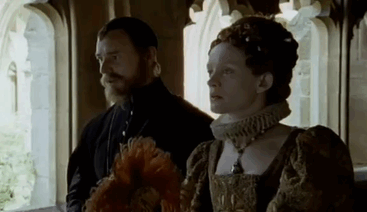

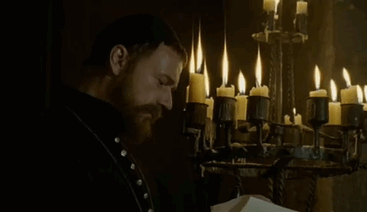
My Top Five Favorite Ben Daniels Characters (Pre-1900s Period Dramas) - Honorable Mentions: 3. Sir Francis Walsingham - The Virgin Queen (2005).
23 notes
·
View notes
Text
This lovely Red dress is seen on The Virgin Queen (2005) Anne Marie Duff as Queen Elizabeth I and worn on Natalie Dormer as Anne Boleyn from The Tudors (2007) and worn on Joss Stone as Anne of Cleves from The Tudors (2010) seen again on a doll dummy from Seventh Son (2014).

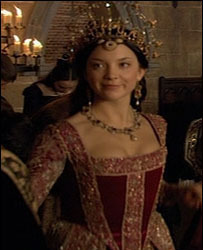

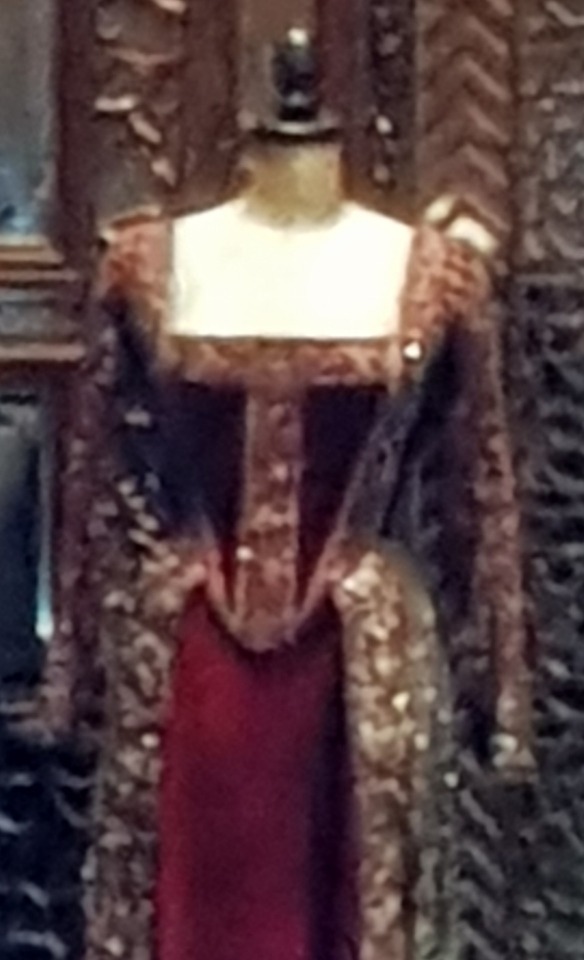
#recycled costumes#the virgin queen#anne marie duff#queen elizabeth i#the tudors#natalie dormer#anne boleyn#joss stone#anne of cleves#Seventh Son (2014)#costume drama#historical drama#reused costume#reused costumes#dramasource#drama series#source: historicalreusedcostumes
16 notes
·
View notes
Note
What historical dramas (movies or shows) would you recommend, based on closest accuracy to history?
hmmmm THAT'S THE THING, so many historical dramas that are my favorites (entertaining, engaging, make me gnaw at the bars of my enclosure) aren't always the most accurate ones (The Terror being supernatural, The Borgias existing in a bonkers fantasy reality). HOWEVER. The Virgin Queen (2005) is definitely up there, and my beloved Wolf Hall. Outlaw King, arguably. And of COURSE HBO's Rome, which an old classics professor of mine adored because of the accuracy of Roman street life...until it gets to the Egypt stuff, which ALL sucks. Things like Gentleman Jack and the 2020 Emma did literal time travelling with their costume design. And obviously Master and Commander, which was actually filmed in 1805 as far as I'm concerned.
#lowkey honored to get this ask#but yes a lot of my FAVES end up being truer to an engaging narrative of history than to the history itself...if that makes sense#The Witch perfectly recreated a lost dialect but also satan himself makes an appearance and he's hot...etc
7 notes
·
View notes